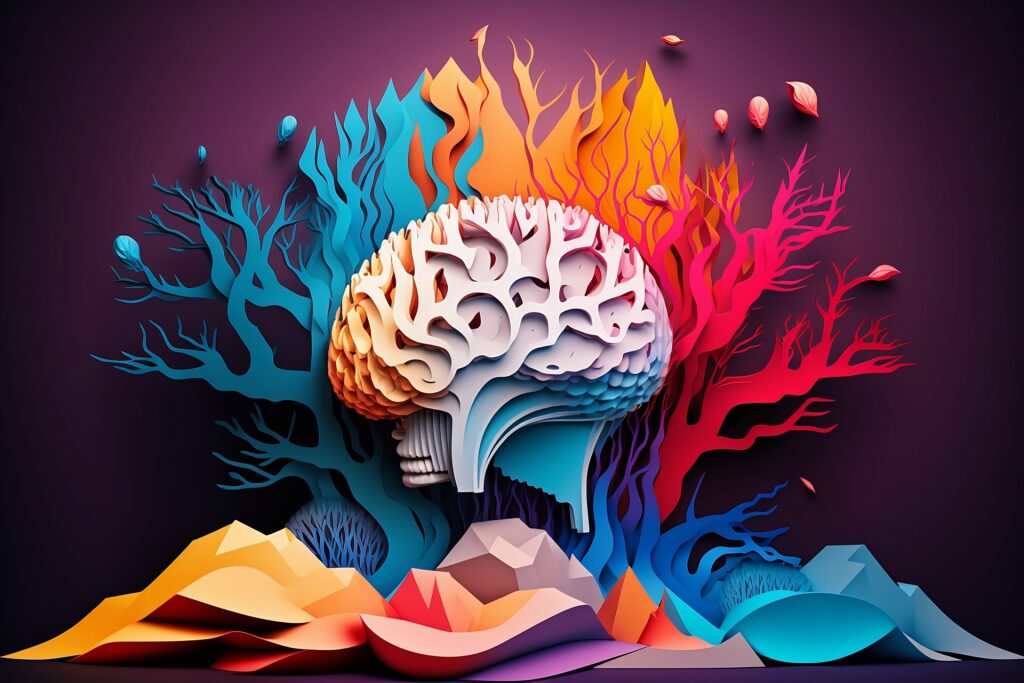“Applying copyright law to computer programs is like assembling a jigsaw puzzle whose pieces do not quite fit.”
Lotus Dev. Corp. v. Borland Int’l, 49. F.3d 807, 820 (1st Cir. 1995)
Judge Boudin’s quote above is even more appropriate for artificial intelligence (AI) technology. It’s unlike the human, creative, written works and conceptions in the minds of the human inventors that IP law was designed to incentivize and protect. Instead, AI technology may be purely factual and functional or able to self-learn, change, and generate new works with little or no human input or control.
From data and software to models and output, AI technology is an awkward fit for intellectual property (IP) law because the law is both overinclusive and underinclusive. Copyright law is a good example. Copyright protection for works of authorship is far too inclusive for the needs of AI technology development. The bar for copyrightability is very, very low. In our digital world, copyright protection exists for most human created content on the internet, our computers, and phones, including drunk text messages and pet videos. Considering the U.S. founder’s intent to promote progress in science and the arts for the public good, this scope of copyright protection makes little sense for AI technology.
Most of the recent advancements in AI have only been possible because of massive training datasets, many of which have been scrapped off the internet. For example, ImageNet, which has over 14 million labeled images, has been invaluable for the development of computer vision models and deep learning.[i] ImageNet has been widely used for bench-marking computer vision models to ensure accuracy. ImageNet was enabled by Stanford Vision Lab, Stanford University, Princeton University, Google, NVIDEA, and the world-wide workers who labeled images through Amazon’s Mechanical Turk crowdsourcing program.[ii] It would have been impossible to compile such a massive, labeled database by negotiating individual agreements. It’s likely if an image copyright holder accuses the database creators of copyright infringement, fair use will be the defense. It’s the flexible loophole in US copyright law for the common good that limits the monopoly copyright owners have over copying and modification of their works.
Fair use, however, is a poor doctrine to rely on for AI training because it doesn’t give companies clarity, certainty, and repose. The fair use doctrine’s very flexibility makes it hard to pin down. Fair use is a complicated fact specific inquiry that requires in-depth legal analysis. Historically, US courts have struggled to decide what’s fair even on the same facts. (See the Oracle v. Google ping-ponging cases. It took ten years to get a final ruling of fair use by the Supreme Court.)[iii] Only rich companies can afford millions in litigation costs and a decade in court. Small AI companies, who can’t afford to hire attorneys for analysis or litigation if sued, are at a huge disadvantage.
IP law is also underinclusive for AI technology. IP rights may be thin, non-existent, or hard to obtain. For example, in the US very valuable geographic data collected from satellites or vehicles, when freely shared on the internet or phone apps, may have little to no IP protection. Neither a monkey taking a selfie nor a machine automatically taking photographs can create copyrightable works under US law. Although a database or data container of machine generated information that a human selected and organized with her judgement may have a compilation copyright, the US protection is thin and only protects the creativity in the structure, sequence, and organization. Unlike the EU, the US does not have database rights. US copyright law may not protect non-copyrightable content from extraction. Several US courts have held there is no copyright infringement, even if the database is copied, if only factual information is extracted and used.[iv] Obviously, trade secret protection isn’t available for valuable information that is publicly available.
Similarly, in the US, copyright protection doesn’t extend to computer-generated works lacking a human author or independent human creative (non-functional) expression. The US Copyright Office has been clear that human authorship and creativity is required for copyrightability of AI output.[v] A text prompt for a generative AI system is insufficient for human authorship because the human does not control how prompts are interpreted or how output is generated by the AI system. Although AI generated images on a stock photography website may be stunningly creative, if there is insufficient human control and creativity in the creation of the image, the work isn't copyrightable. Given the recent USPTO decisions, protectability by copyright law for expressive AI generated output created in the US is uncertain.
What’s also unclear is how much AI generated work might be allowed as part of a human authored work and still qualify for a copyright registration, which is required for copyright enforcement in US courts. The trend for software programmers to use AI to create new code, which is integrated with other human generated code, creates new legal uncertainty about the availability of copyright protection for the entire software program.
Additionally, many AI model files present numerous copyright misfit problems: lack of human authorship, lack of human creativity, or lack of human control over autonomously, continually changing code, which would be hard to capture in a copyright registration for enforcement. Although APIs are copyrightable, copyright protection for some AI model files may be thin or non-existent under US law.

Patent protection may also be hard to obtain for AI inventions. AI is pushing the paradigm of patent law and raising issues related to subject matter eligibility, obviousness, enablement, and inventorship. Patent law does not protect abstract ideas or mathematical formulas. (Some patent attorneys complain that examiners in a variety of countries think AI is just math.) The US test for determining patent subject matter eligibility is complex.[vi] Moreover, in 2020, the USPTO issued several decisions rejecting patent applications listing only an AI system (DARBUS) as the inventor. The Federal Circuit upheld these decisions holding “only a natural person can be an inventor, so AI cannot be.”[vii] Recent USPTO guidance, however, clarified that an invention created with the aid of an AI system may be patentable if a human made a significant contribution to inventorship. Similar to the complexity of circumventing patent subject matter rejections, prosecuting patent applications for AI assisted inventions will take a highly skilled patent attorney to figure out how the new rules apply.[viii] The USPTO is seeking public input on the guidance for AI and inventorship until May 13, 2024.[ix]

Further, IP rights are national – not international. Consequently, what IP rights protect AI technology may vary significantly depending on the country where the AI technology is collected, authored, or invented. And IP rights across the world, even in EU member states, are far from harmonized. For example, like the US, Germany does not recognize a copyright to a computer-generated work without a human author. In contrast, Ireland and the United Kingdom do.[x] But there is still legal uncertainty. In the UK, the “author” of the copyright to the computer-generated work is the one who made the necessary arrangements for the creation of the work.[xi] Is the arranger the model creator or the person using the model to create output?
As AI technology is creatively contained, aggregated, modified, or merged with other technology, who owns IP rights, if any, may change or get muddled. For example, if the main information file for a model’s weights completely changes when it is trained by another company on that company’s equipment by its engineers, do rights transform along with the model? Do original trade secret rights simply disappear along with the old weight information? Do new trade secret rights automatically arise to the newly generated model information and become owned by the second company? Further, trade secret protection may be lost through use of an AI service where the model looks at and uses trade secret information on an engineer’s computer for its own training purposes or exposes that information to a third party. Trade secret law wasn’t enacted with automatically morphing AI technology in mind.
Further, AI technology can easily move across borders and between types of entities. As it morphs along its travels, identifying what IP rights apply, if any, and who owns them under national law gets complicated. For example, what if two companies collaborate in Europe to create a training dataset and one company has its headquarters in an EU member country and the other does not? Database rights only arise to the EU member company.
Additionally, what are the implications if a model is trained at a university, who is relying on fair use or a text and data mining exception to copyright infringement, then the model is put on a centralized model hub on the internet, downloaded, fine-tuned, and used by a company across the world? Tracing the national origin and genealogy of a model may be difficult. Identifying all datasets used for all training may be impossible. A model’s code is not like human DNA, which could be sequenced. It’s more like a brain, which changes as it learns, and even an autopsy can’t reveal its content. Similarly, seeing what’s inside a model’s neural network and identifying every source of information, including copyrighted works, it has learned from to create its neural connections over its lifetime is unknowable with current tools.

There are no easy answers when AI technology doesn’t fit existing IP laws. Future posts will explain some nuances of US IP laws and provide tips for navigating this legal maze. Since AI technology doesn’t fit IP law, old approaches and old templates for term sheets and technology agreements don’t fit well either. But with more understanding of the challenges AI technology presents, companies can follow new paths and change course to take advantage of AI technology while avoiding lurking monsters of legal liability.
[i] https://www.historyofdatascience.com/imagenet-a-pioneering-vision-for-computers/
[ii] https://www.image-net.org/about.php (See cited documents discussing creation of the ImageNet database including, L. Fei Fei, “IMAGENET: crowdsourcing, benchmarking, and other cool things” 2010) (“Step 1: collect candidate images via the internet. Step 2: clean up the candidate images by humans”)
[iii]Google LLC v. Oracle America Inc., 141 S. Ct. 1163 (2021) https://www.supremecourt.gov/opinions/20pdf/18-956_d18f.pdf
[iv] Phantomalert, Inc. v. Google Inc. (Case no. 15-cv-03986-JCS (N.D. Cal. Marl. 8, 2016) (dismissing a copyright infringement claim for lack of evidence of copying of creative elements of a database rather than use of factual information about driving conditions); Assessment Technologies of WI, LLC v. WIREdata, Inc., 350 F.3d 640, 646 (7th Cir. 2003) (finding copying of a database to extract factual data was fair use and not copyright infringement), Sega Enterprises Ltd. v. Accolade, Inc., 977 F.2d 1510, 1520-28 (9th Cir. 1992); Bikram's Yoga College of India L.P. v. Evolation Yoga, LCC, 803 F.3d 1032, p. 9-13 (9th Cir. 2015) (finding the idea of a process to organize, select and arrange information in a database is not copyrightable).
[v] https://copyright.gov/ai/ai_policy_guidance.pdf
[vi] https://www.uspto.gov/web/offices/pac/mpep/s2106.html (USPTO guidance regarding patent subject matter eligibility).
[vii] Thaler v. Vidal, 43 F.4th 1207, 1213 (Fed. Cir. 2022), cert denied, 143 S. Ct. 1783 (2023).
[viii] https://www.federalregister.gov/documents/2024/02/13/2024-02623/inventorship-guidance-for-ai-assisted-inventions - footnote-12-p10045
[ix] https://www.federalregister.gov/documents/2023/03/16/2023-05321/copyright-registration-guidance-works-containing-material-generated-by-artificial-intelligence
[x] India, New Zealand, and South Africa also allow copyright protection for computer-generated works.
[xi] https://www.gov.uk/government/consultations/artificial-intelligence-and-intellectual-property-call-for-views/artificial-intelligence-call-for-views-copyright-and-related-rights




